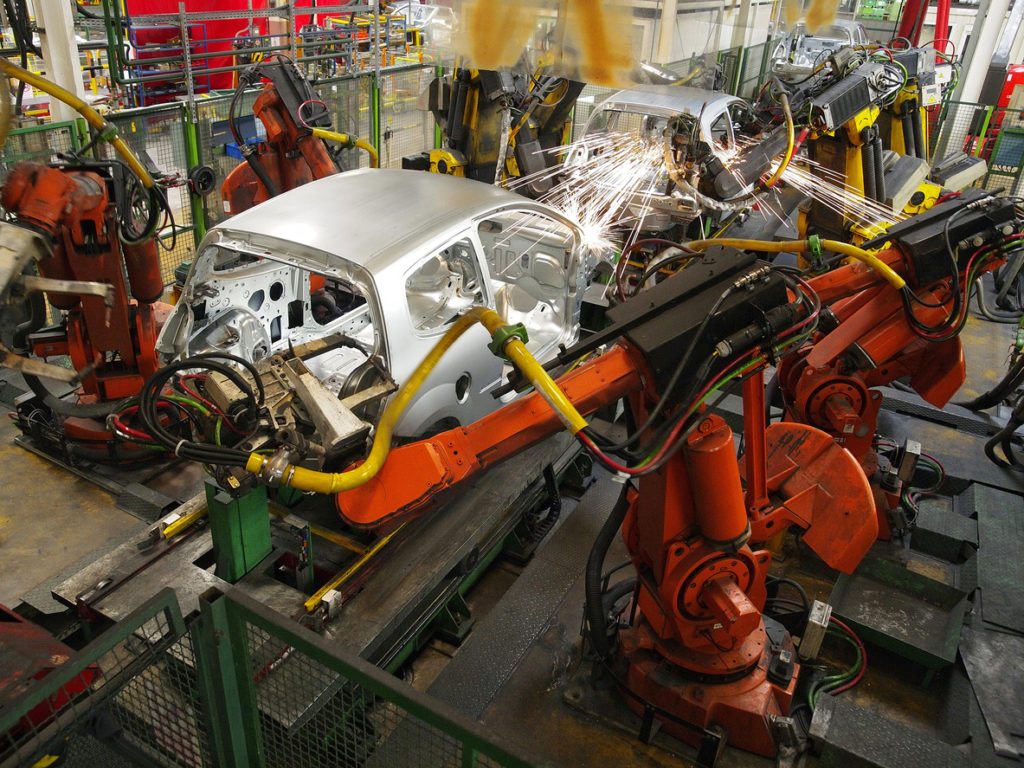Robots in Automotive Manufacturing: Top 6 Applications
Robots in Automotive Manufacturing: Top 6 Applications
 The automotive manufacturing industry has been one of the earliest and most enthusiastic adopters of industrial robotics. Over the years, robots have become an essential part of the production process, helping to increase efficiency, improve quality, and reduce costs. Today, automation is at the core of the automotive supply chain, with robots playing a key role in nearly every stage of vehicle production.
The automotive manufacturing industry has been one of the earliest and most enthusiastic adopters of industrial robotics. Over the years, robots have become an essential part of the production process, helping to increase efficiency, improve quality, and reduce costs. Today, automation is at the core of the automotive supply chain, with robots playing a key role in nearly every stage of vehicle production.
While there are numerous robotic applications used in the industry, six stand out as the most common and impactful. These applications not only enhance productivity but also ensure precision, safety, and consistency in manufacturing. Let's take a closer look at the top six robotic applications in automotive manufacturing.
Top 6 Robotic Applications in Automotive Manufacturing
The following robotic applications are widely used across the automotive sector:
1. Collaborative Robots (Cobots)
Collaborative robots are designed to work safely alongside human workers or other machines on assembly lines. They help streamline operations by handling tasks that require both precision and flexibility, such as assembling small parts or assisting in complex welding processes.
2. Robotic Painting
Painting is a critical step in car manufacturing, but it can be dangerous and labor-intensive for humans due to exposure to toxic fumes. Robots excel in this area, delivering consistent, high-quality finishes while reducing waste and improving efficiency.
3. Robotic Welding
Welding is one of the most well-established uses of robotics in the automotive industry. Robots perform precise and repeatable welds, ensuring structural integrity and saving time compared to manual methods. This application remains a cornerstone of modern automotive production.
4. Robotic Assembly
In many automotive plants, robots handle the assembly of smaller components such as engines, transmissions, and electrical systems. They also assist with larger tasks like installing windshields or mounting wheels, significantly increasing production speed and accuracy.
5. Material Removal
Robots are ideal for tasks that require high precision and repetition, such as trimming, cutting, and polishing. Whether it's removing excess material from plastic moldings or smoothing metal surfaces, robots deliver consistent results with minimal error.
6. Part Transfer and Machine Tending
Handling heavy materials and operating dangerous machinery is a perfect fit for robots. They are commonly used for transferring parts between stations, loading/unloading CNC machines, and managing molten metal in casting processes, all while maintaining high levels of productivity and safety.
From painting to welding, assembly to material removal, robots have revolutionized the way cars are made. As technology continues to evolve, their role in automotive manufacturing will only grow. With advancements in AI and machine learning, future robotic systems will become even more intelligent and adaptable, further transforming the industry.
Genesis has been a trusted partner in the global automotive industry for decades. Explore our case studies and discover how we help integrate robotic solutions into your manufacturing process. Visit our Automotive Robotics and Integration section to learn more about our services.

Wuxi Yizhiling Locomotive Development Co. LTD , https://www.yizhilingev.com